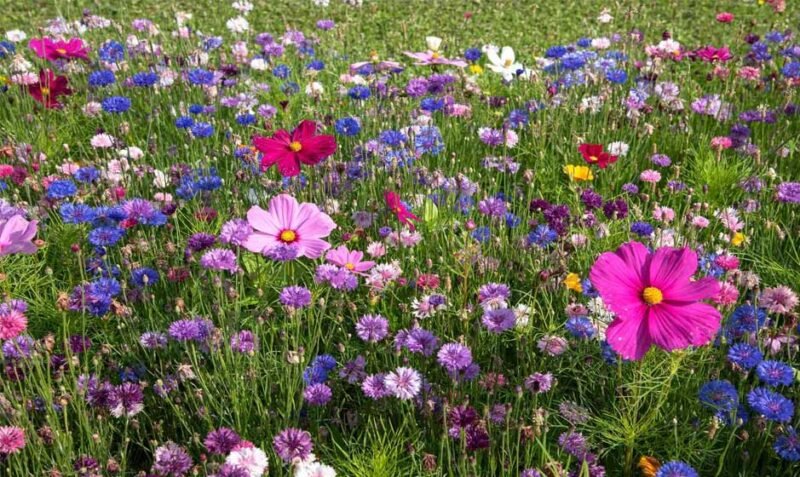Dreaming of a colorful wildflower patch buzzing with bees and butterflies? Before you scatter your seed, there’s one crucial step that sets the stage for success: preparing your soil.
Unlike high-maintenance lawns or vegetable gardens, wildflowers are surprisingly low-fuss once they’re established. But getting the soil right at the beginning can make all the difference between a sparse sprinkle of blooms and a lush, thriving meadow.
Here’s how to prep your soil the right way—no green thumb required.
Why Soil Prep Matters
Wildflowers are resilient, but they still need a good foundation to get started. Clearing the area of weeds and giving your seeds proper contact with the soil ensures faster germination, better root development, and healthier blooms.
Skipping this step often leads to:
- Patchy or uneven growth
- Wildflower seeds getting choked out by grass and weeds
- Wasted time and money
A little effort upfront = a whole lot of beauty later.
Step-by-Step: How to Prepare Soil for Wildflower Seeds
- Choose Your Spot Wisely
Most wildflowers love full sun, at least 6–8 hours a day. Pick an area that gets plenty of sunlight and drains well. Avoid low-lying spots that stay soggy. - Clear the Ground
This is the most important part. Remove all grass, weeds, and debris. You want bare, exposed soil so your wildflower seeds don’t have to compete for space or nutrients.
You can do this by:
- Tilling or cultivating the top 1–2 inches of soil
- Smothering grass with cardboard or a tarp for a few weeks
- Using a garden hoe or sod cutter for small areas
- Break Up the Soil Surface
Loosen the top layer of soil so it’s crumbly but not fluffy. This gives grass seed a better chance to settle in and stay moist. You don’t need to dig deep, just enough for good seed-to-soil contact.
Avoid adding compost or fertilizer. Wildflowers often thrive in poor, well-drained soil. Too much richness can actually encourage weeds or overly aggressive grasses.
- Level It Out
Rake the area to even out the surface. Remove any remaining clumps, rocks, or roots that could interfere with seed placement. - Water Before Seeding (Optional but Helpful)
Some people lightly water the soil before planting, especially in dry regions. Moist soil can help kickstart germination, but avoid creating mud. You want damp, not soggy.
Pro Tip: Do a Soil Test (If You’re Planting a Large Area)
If you’re seeding a large meadow or want to get serious about wildflower success, a simple soil test can help you:
- Understand your pH levels
- Identify deficiencies
- Choose the right mix (some species prefer acidic or alkaline conditions)
You don’t have to test your soil for small garden patches, but it’s a great move for bigger or more complex planting projects.
After You Prep: What Comes Next?
Once your soil is ready:
- Scatter your wildflower seeds evenly across the prepared surface
- Press them into the soil with a roller or by walking gently over the area
- Water regularly until seeds germinate (usually 7–30 days depending on species and weather)
Then? Let nature take over. With the right prep, your soil will do what it’s meant to do—grow something beautiful.
Conclusion
Preparing soil for wildflowers isn’t complicated, but it is essential. It’s the difference between a “meh” lawn experiment and a blooming, pollinator-friendly paradise. Give your seeds the best possible start, and they’ll reward you with color, life, and joy for seasons to come.








